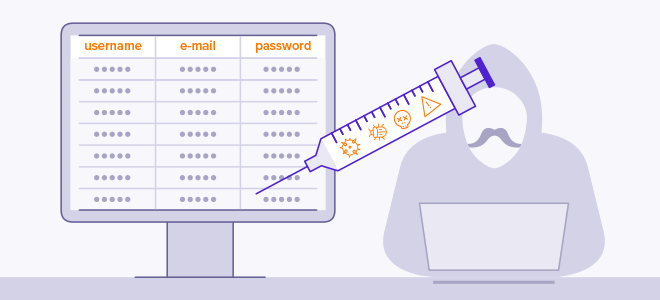Structured Query Language (SQL) is the language used to communicate with databases. It is a standard language for managing data, and it is widely used in web applications, back-end systems, and other software products. However, SQL injection attacks are a common form of cyber-attack that can compromise the security of your database and, in turn, your entire system.

SQL injection is a technique used by attackers to manipulate or inject malicious SQL statements into an application's input field. This technique exploits vulnerabilities in web applications that use user input to build SQL queries. If an application is not programmed correctly, an attacker can inject code into the input field that will be executed by the database.
The impact of a successful SQL injection attack can be devastating. Attackers can gain access to sensitive information, modify or delete data, or even take control of the entire system. For example, an attacker could use SQL injection to retrieve usernames and passwords, then use that information to log in and steal more data or launch further attacks.
SQL injection attacks can be classified into several types based on the techniques used by attackers to inject malicious SQL code into an application's database. Some common types of SQL injection attacks include:
- Union-based SQL injection: This type of attack involves injecting a UNION statement into an application's database query to combine the results of two different SELECT statements. By doing so, attackers can retrieve sensitive information from the database that they would not have been able to access otherwise.
- Error-based SQL injection: This type of attack exploits error messages generated by a database when an SQL query fails. Attackers use this information to infer the structure of the database, which can be used to launch further attacks.
- Boolean-based SQL injection: This type of attack uses Boolean logic to infer information about the database. Attackers use conditional statements such as "AND" or "OR" to create queries that can reveal information about the database structure.
- Time-based SQL injection: This type of attack uses timing delays to infer information about the database. Attackers create queries that execute slowly if certain conditions are met, allowing them to determine whether a particular piece of data exists in the database.
- Out-of-band SQL injection: This type of attack uses a separate channel, such as DNS or HTTP requests, to communicate with the attacker's server. By doing so, attackers can retrieve sensitive information from the database or execute arbitrary commands.
To prevent SQL injection, it is crucial to follow secure coding practices when building web applications. One of the most effective ways to prevent SQL injection is to use parameterized queries. Parameterized queries are precompiled SQL statements that allow developers to substitute user input with safe parameters. By using parameterized queries, developers can ensure that user input is always treated as data, not code, and prevent SQL injection attacks.
Another method to prevent SQL injection is input validation. Input validation is the process of verifying user input to ensure that it is valid and conforms to a set of predefined rules. By validating input, developers can ensure that only acceptable data is sent to the database, and malicious input is filtered out.
In addition to using parameterized queries and input validation, it is essential to keep your software up to date with the latest security patches and updates. This can prevent attackers from exploiting known vulnerabilities in older versions of software.
SQL injection attacks are often successful because web applications may have vulnerabilities in their input validation and SQL query construction processes. Attackers can leverage these vulnerabilities to inject malicious SQL code, causing the application to execute unintended commands and expose sensitive data.
One way that SQL injection attacks can be carried out is through the use of a simple SQL statement such as "OR 1=1". This statement can be added to an existing SQL query to bypass any user authentication requirements, essentially granting the attacker access to the database. The "1=1" condition is always true, so the injected code is executed by the database.
Another common type of SQL injection attack is known as a "blind" attack. This occurs when an attacker is unable to see the results of their SQL queries, such as when an application only displays error messages. In these cases, attackers use various techniques to infer information about the database, such as guessing table and column names or using timing attacks to measure query execution times.
SQL injection attacks can be prevented by implementing secure coding practices and using tools that can help detect and prevent them. One tool that can be used is a web application firewall (WAF), which can monitor incoming requests and block those that contain SQL injection code.
Another approach is to use a database management system (DBMS) that supports prepared statements. Prepared statements allow developers to separate SQL commands from user input, reducing the risk of SQL injection attacks.
In addition to technical solutions, security awareness and training can help prevent SQL injection attacks. Developers and other staff members should be educated about the risks of SQL injection attacks and how to prevent them.
In summary, SQL injection attacks can have severe consequences for the security of a database and the entire system. It is essential to implement secure coding practices, use tools such as web application firewalls, and conduct security awareness training to prevent these types of attacks. By taking a proactive approach to security, organizations can ensure that their systems remain secure and protected from SQL injection attacks.

